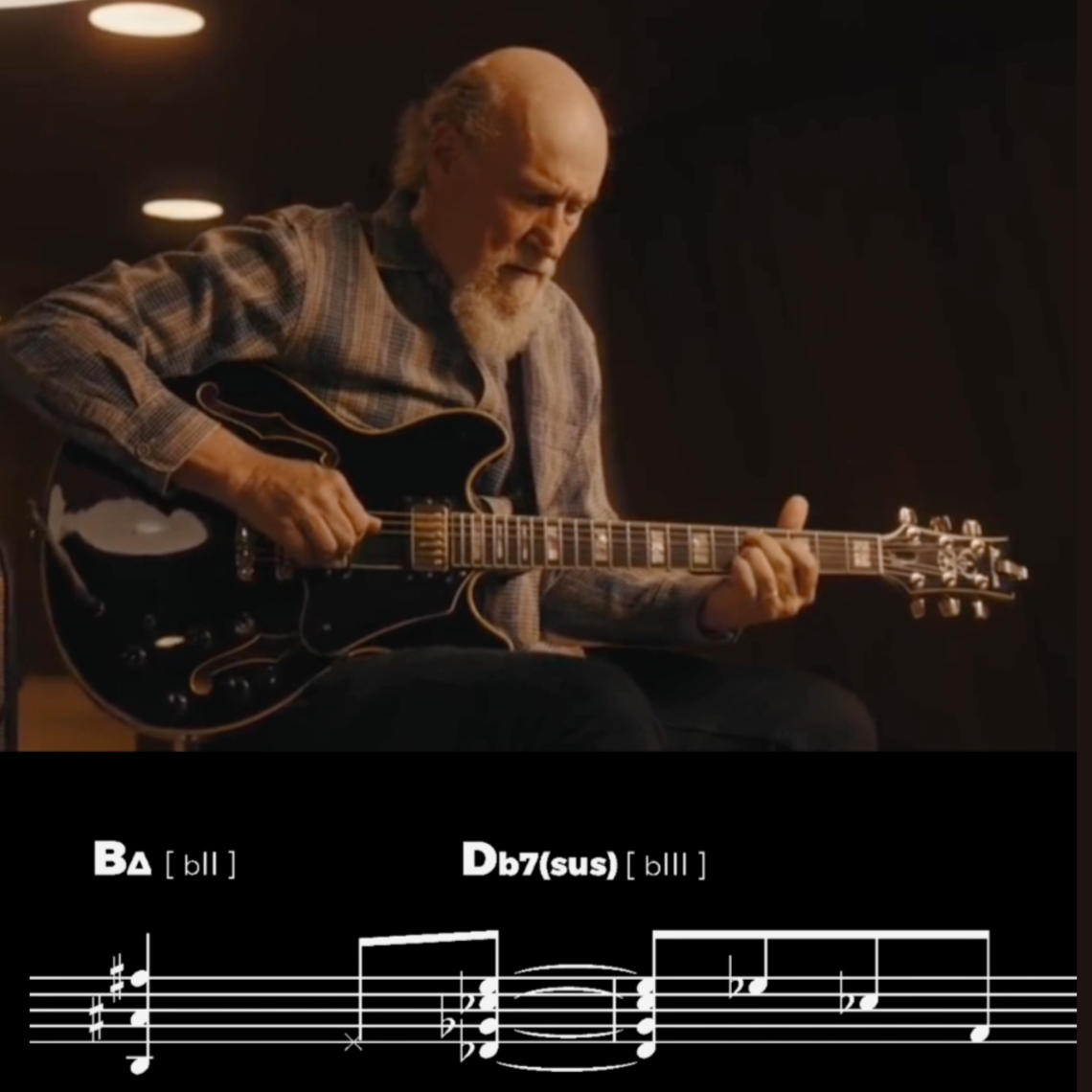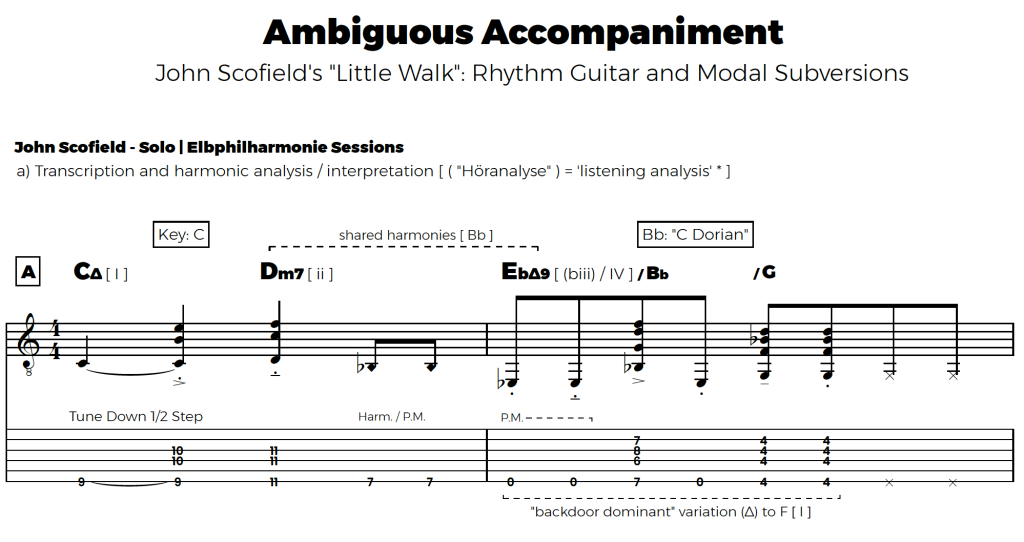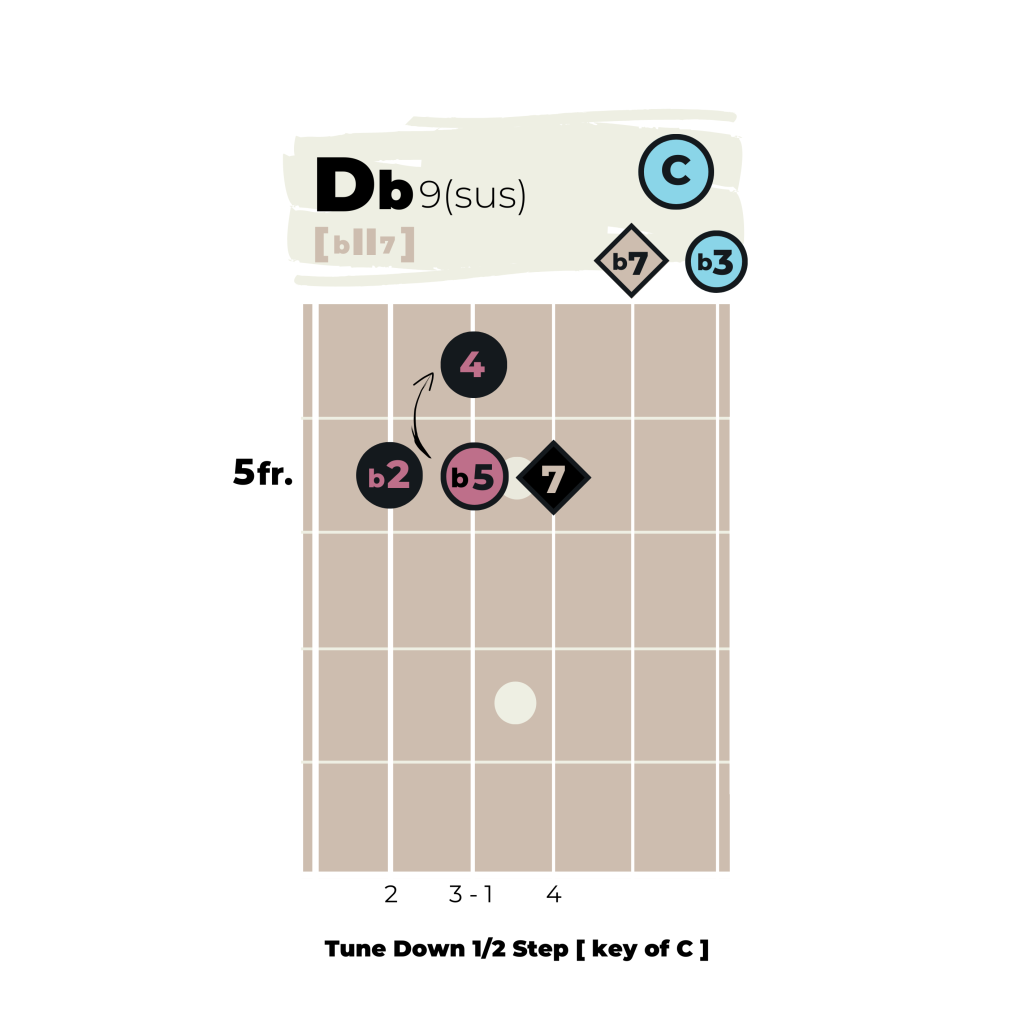
Modal Subversions [1] “Little Walk” – John Scofield
How to learn by using music theory and getting rid of it at the same time?
“ […] Music exists in a different part of your brain. It’s not about an idea that can be described with language – or an idea visual: those names, I think come after – music exists in its own place.”
– John Scofield
Listening closely to a couple of moments [ ‘bars’ ] of John Scofield’s [ ‘virtuoso’, ‘sound wizard’ ] music [ ‘guitar playing’, ‘tone’ ] already unveils a unique world of expression within itself [ ‘rhythm’, ‘contour’, ‘texture’, ‘harmony’, ‘phrases’, ‘tension’, ‘resolution’, ‘mood’, ‘feel’, ‘tradition’, ‘avantgarde’ … ].
To add necessary context when it comes to learning about music and how to relate and engage with it, like in this case with the suggested help of transcriptions (visual representations) and derived music theory concepts (language) – how can this approach still be helpful for the task at hand?

It’s a process.
It might not appear this way – simply by the chosen mode of (re)presentation – yet all of those music theory terms and concepts, even transcriptions, supposedly a practical translation of the actual, real thing, the organized sound itself, all of these can be very useful and necessary for most, just keep in mind, in the end they’re just another arbitrary collection of words, dots, lines or numbers.
These obviously hold practical meaning, based on convention, and can be deciphered, understood and ‘translated’ back into sound, based on experience. While these vantage points are secondary, their role can still be a crucial one to unlock the grammar of music.
Take this visually depicted harmony from the performance:

Its musical function is to resolve back to the key in which the song started [ C: bII – I ]. The numbers and colors show how the pitches in the harmony relate to the next key / harmony / chord voicing. The diagram gives away that there’s some mild dissonance within the voicing, more so in context. It dalso serves as a voice-leading map of sorts, e.g. hinting at how to create a similar musical effect in different musical situations.
Another takeaway beyond finding new voicing ideas, e.g. for interpreting compositions:
The mentioned bII function is often a 7#4 sound – especially in most music theory books. Here, the actual choice for a 9(sus) sound makes it a more distinct decision for the song’s initial composition. Knowing details like this opens up more deliberate decisions, to either stay close to the original idea or opt for a (more common) ‘smooth jazz’ sound 😉
So a bII doesn’t always has to be that type of chord (there are more reasons for this), in contrast to some version of that saying which you might’ve heard before: “F is always the subdominant …” Actually, in this song specifiacally, it turns out to be another tonic – though you can still add the # 4 …
Music theory concepts and depictions are most useful when allowing for a rather flexible, individual focus on related topics, as compared to suggesting narrow methods. These are mostly helpful for very specific topics with very distinct goals and therefore, might not always be a match with the wide range of personal perception capacities.
Put language in its place or ‘knowing the music’.
All this is very obvious, albeit hidden, e.g. by common implications of everyday practice. There’s a plethora of reasons and mechanism as to why ways of conceptualizing of that which is perceived are often over indexed as compared to the actual subject itself. Different ways of conceptualizing in any given form or iteration are still needed to provide for musical development and overall agency.
The underlying structure of music, just like the grammar of any other language, is non-linear, as compared to an actual musical performance or a spoken / written sentence: to perceive given surface phenotypes (‘concrete iterations’ of a given ‘idea’) and their transformations (e.g. ‘scales’ and their ‘modes’, meaning: how the sound is created and perceived, not the assigned arbitrary terms), then distinguish them from the underlying musical ‘text’, enables to learn to know more about the true nature of musical structures.
This way of knowing – different from descriptive, data-based ‘knowledge’, rather: being aware of the possible nature, behavior and function of structures, how they interact with each other in context and how this changes subsequent transformations – this grants a perspective to first internalize musical ideas, then to express versions of them, more easily.
A simple example for this, derived from an ear training exercise, would be knowing / perceiving the distinct key ‘colors’ of the notes in a given major scale and roughly know where these can be found (and transposed) on the fretboard. Speaking of knowing their sound effects and resolution tendencies regarding the tonal center – and how one note sets up the listeners expectation for the next sound.
A contrasting approach would be to first learn the scale in one specific position with a specific fingering, applying permutations, then moving on to all other possible positions to repeat the process. This is a great technical exercise for dexterity and fretboard orientation. Your intentions with this one might be different though.
The contrast can be summarized as – knowing the neighborhood – vs. being busy with exercises, following along methods and such. These surely do have their place for a given goal but they don’t constitute an end in themselves, e.g. when being “mastered”.
To summarize this by quoting The Clash, we all might’ve felt “Lost in the Supermarket” during one time or another, though not literally: or did you ever studied a shop’s layout in detail and walked all the aisles before trying to find your groceries? 😉
Modes of understanding and communication
It’s not reasonable to assume that influential musicians like Hendrix who aren’t familiar / not concerned with some common practice ( e.g. standard notation ) arrived at their form of expression without first having had to come up with different yet equally valid and at the same time arbitrary concepts of their own – then moving on to – what’s the buzz word? – just ‘feeling the music’, while performing it.
Beyond the buzz word – that’s actually the way.
Another example: Bill Frisell doesn’t read TABs. He started out learning about music with standard notation before moving on to guitar. This is based on his learning circumstance in the past, he could easily figure it out but there’s obviously no need to sightread TABs.
At the same time and somewhat ironically, the mode of TAB notation is one of the more practical ways to actually show how aspects of his unique musical style are created via that six-string interface.
Different musical traditions, also those which are conceptually very close to each other still develop varied means of how to communicate their music amongst each other, over and over again – hence the differences. These are based on place and circumstance, the cause of the difference lies not in differing qualities of a given model or in its constraining structures, but in the differing nature of the things to which a human mind has been put, and that which proves to lead to a successful outcome.
Now imagine the effect if a musician is able to access mentioned underlying musical structures to draw inspiration from while also being aware how to communicate these on a surface level with his peers – that’s where divisions give way to their underlying common structure … closer to the essence of that which constitutes music.
The argument here is that it’s highly beneficial to know terms and concepts which are used in different (music) cultures and teaching traditions in order to actualize and contextualize the potential of one’s own, distinctively personal ways of perceiving and expressing ideas. Fostering dialogue and context, a means of communication via translation and conceptualization instead of a focus on ‘mastering’ one narrow set of rules or codes. These are practical perception and learning shortcuts at best.
E.g. ways how to count rhythms and related subsequent exercises, these can be very helpful to get the music into one’s mind while in a learning headspace. Not having to rely on them while ‘applying the concept’ ( = creating the sound) is the proof that the learning process worked, for your personal reading and circumstance, not that there’s an importance of the concept beyond that.
If you’d like to reflect or tell a story, either an original one or re-narration, as in interpreting a song: knowing and understanding more of its words and their meanings is key – not becoming an expert and virtuoso when it comes to interpreting letters and numbers, beyond being able to read source material.
Now, after all this abstract talk, to start with the transcription at hand:
I’d suggest to first listen for all the rhythmic details and textures in John Scofield’s playing:
listen for the placing and duration of rhythms and accents, how attack and decay shapes the way a pitch (group) sounds, develops and interacts; get into the groove and harmony before finding these notes on the guitar. There is much to be learned from that alone.
A next possible step is to play along – really play along – trying to match the rhythms and textures as closely as possible. This can be used as a technical and rhythmic exercise, improving time feel and interaction.
I wouldn’t loop it though – think of available concentration and realistic musical situations and how to prepare accordingly. It’s more about being aware and ready in a given moment than getting it right after the 5th repetition. Using repetitions with the metronome on the other hand offers great insight as to how stable the sonic imprint of the rhythm and the feel is. It also helps to eventually untangle parts of the underlying concepts so these can be internalized as separate ones, vs. just being able to play a vamp, as is.
E.g. this goes a long way to apply a similar rhythm ideas to one of your own progressions or borrow one of the harmonies for another context – while knowing what its effect is in the original song.
Coming up
The different tonal centers as shown in the analysis are intended to outline the song’s compelling play with the listener’s expectations. The key changes and choice of voicings is such that there’s always room for tonal ambiguity and how tension and resolution tendencies are perceived.
Another takeaway is how the same sound / chord takes on different functions in context, also which scale adjustment to make (e.g. 4 vs. #4) to stay close to a composition’s most likely intended sound or to go ahead and alter it deliberately.
More on this in the follow-up lesson:
– Ear training / musical perception: “implicit harmony” – the union of melody and harmony
– perception of chord progressions: same sound / different function
– chord functions: intervallic structures vs. perception of harmonic functions / modal interchange

